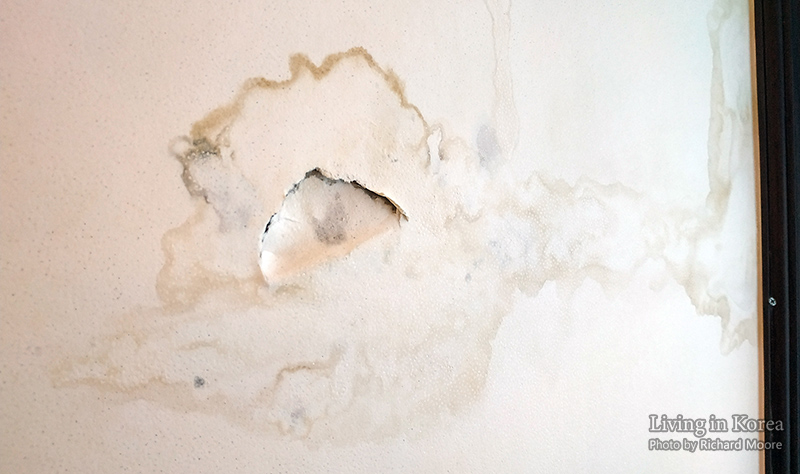To stay warm inside, make sure you familiarize yourself with the thermostat controls in the bedroom as ondols can keep your home nice and warm. Getting an electric heater (전기히터, 電氣히터, jeongi hiteo) is an option as well as they are pretty easy to find. Do be careful of not only their unit price, but how much electricity they consume as your electric bill can jump up quite quickly. As ondols are hot water based, they are significantly cheaper to run in the winter than an electric heater.
If it is hard to stay warm in your bed when the temperature drops, you should consider getting an electric blanket. Called 전기요 (電氣요, jeongiyo) or 전기장판 (電氣壯版, jeongijangpan) for use in beds or on floors, these heated underblankets are sold in several sizes with larger ones having several controls; one for each user. Place it between your mattress and your sheet to get nice and warm in winter. Make sure your blankets (이불, ibul) are an appropriate thickness to keep you warm or consider getting another one.
If something in your home is broken, you can get the landlord to fix it. If you want to improve the weatherproofing of your home, that’s up to you. There are a few methods people do to cut down their heating and cooling bills for summer and winter but these seem to be undertaken more in winter.
If not properly fitted, the space between a door and the door jamb or a window and the window sill, can allow unnecessary airflow. If you want to make it more airtight, look into getting something to fill in that gap. Discount stores tend to have a good variety of options for foam, plastic, or fake fur weather strips. Terms in Korean can include 외풍차단테이프 (外風遮斷테이프, oepung chadan teipeu) or 문풍지 (門風紙 munpungji). Here are some varieties seen in a store.
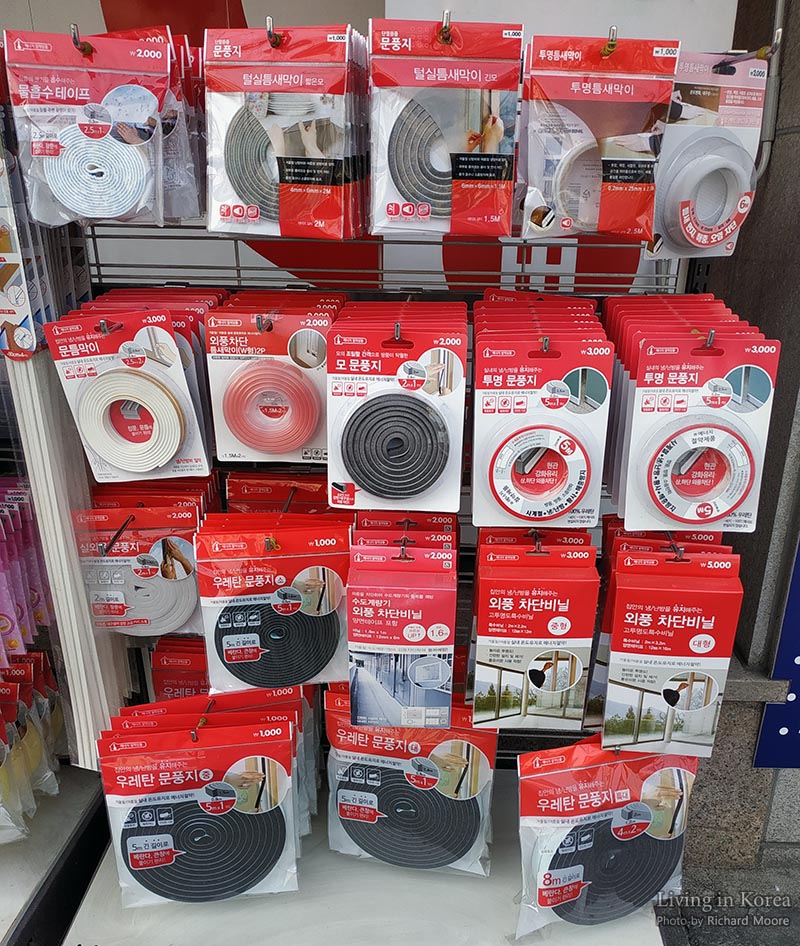
The width, length, and thickness of each will vary, even within the same company. If you get one that is too thick it will be difficult to properly close the door or window. The adhesive on the rear side is not too strong, so if the door/window won’t close and you need to remove a section, it is rather easy to remove some at the time of installation.
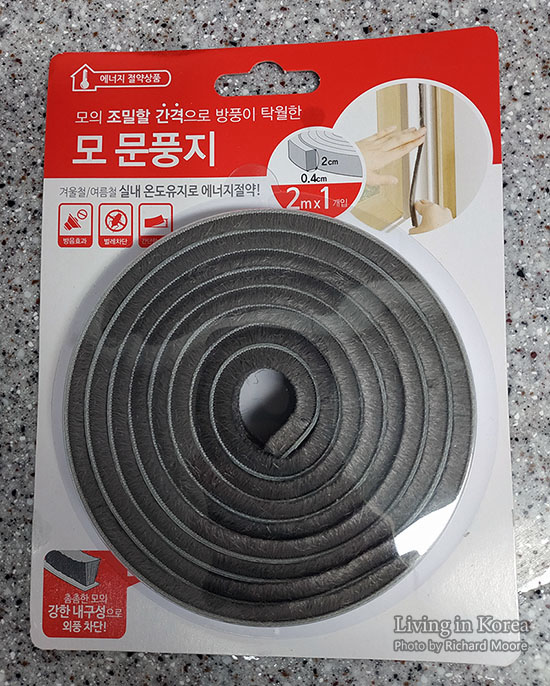
The weatherproofing material will have an adhesive and then paper on the rear. It might be difficult to initially remove the paper backing, but once you get started it is simple. Installation is rather easy if you keep a pair of scissors on hand so you can trim as needed.
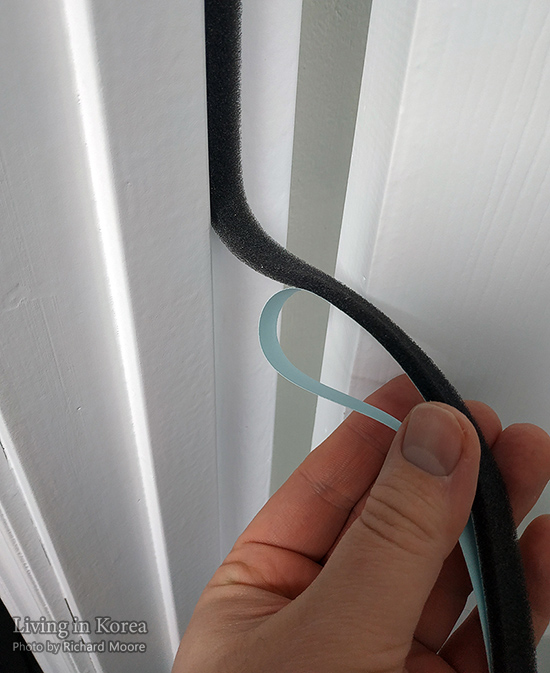
This is a good time to check there are no air gaps between your windows and your wall. If you find any issue, contact your landlord to have them fix it. If you want to fix it yourself you can buy some silicon (실리콘, sillikon). Silicon comes in a long tube with a detachable funnel ending, comes in clear (투명, 透明, tumyeong) or white (백색, 白色, baeksaek), and you’ll need a “silicon gun” (실리콘건) to squeeze it out. Once you open a container of silicon, it will slowly begin to dry out. To preserve your supply for longer, cover the open end to make it airtight.
Not the most attractive option but very effective is to slow down the temperature exchange of windows themselves. Windows are normally double paned with exception for verandas. Regardless of the location, if you want to make your home warmer in winter you can cover panes of glass with bubble wrap. Called “air cap” in Korean (에어캡) or sometimes 단열시트 (斷熱, danyeol siteu for specific window insulation sheets, either one can be applied to glass if you first make the glass moist with water. You might have a small pile of bubble wrap left over from when you move which can be repurposed for weatherproofing. Another cheap option is to keep the bubble wrap from delivery packages.
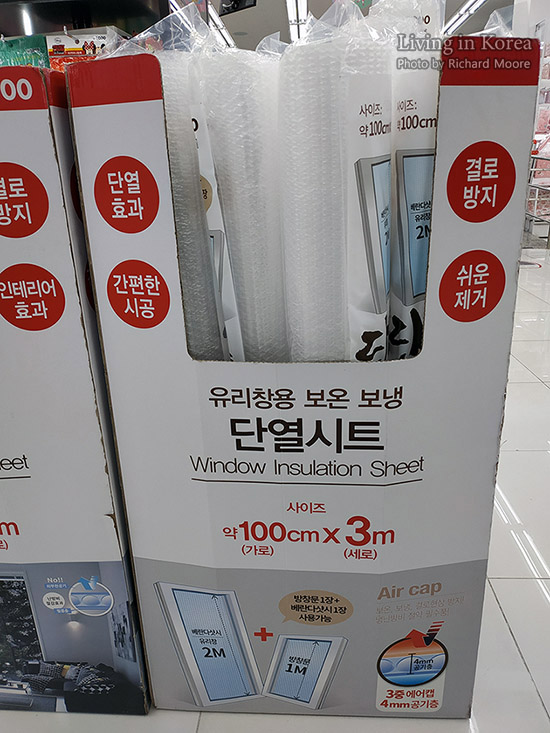
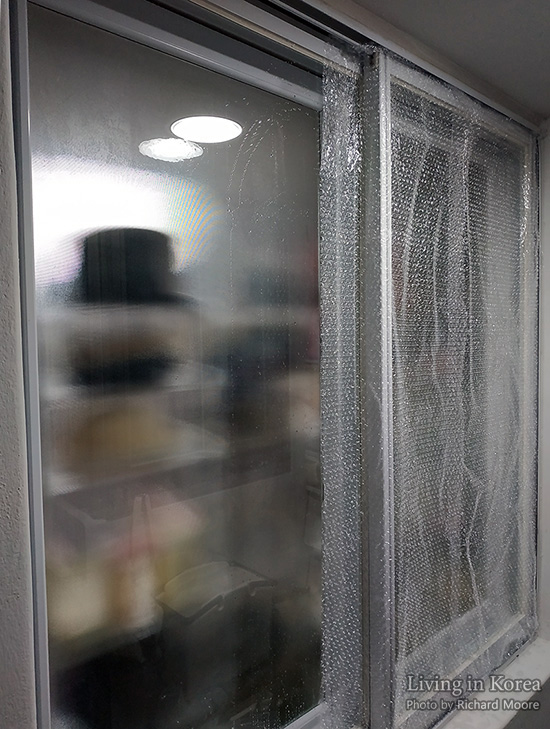
Slightly overlap the bubble wrap where the edges end and try to put a bit more in the gap at the top and bottom of the window sill. This is easier said than done as the weight of the plastic is sometimes enough for it to fall by itself.
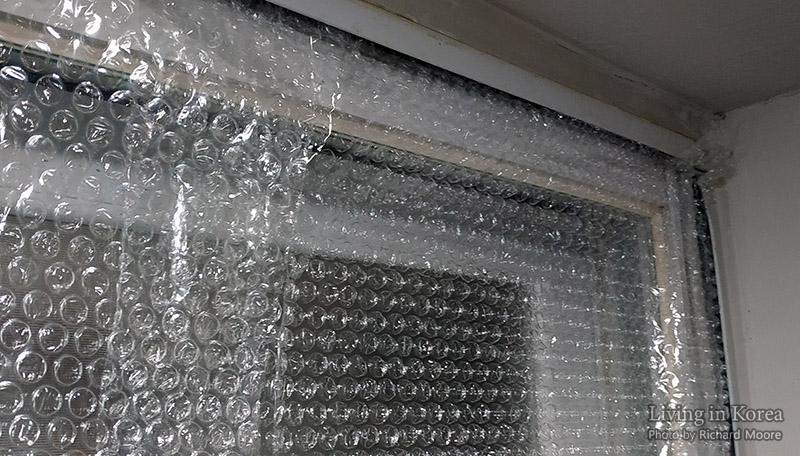

Verandas are typically the coldest parts of a home. One of the most frustrating things in winter is the inability to do laundry in home because the water pipes have frozen. If your washing machine water hoses are freezing then adding bubble wrap to the windows can be nice but doesn’t guarantee you’ll be problem free. Another trick is to place a few bricks just under the washing machine so it is slightly higher off the cold ground. If the hoses are still freezing you might want to turn off the water at the wall connection and then disconnect the hot and cold hoses where they connect to the washing machine itself. This will empty the hoses so there is nothing to freeze.

These connections are designed to be screwed on and off without tools. Frozen or overtightened hoses will be difficult to remove. Here the cold water hose has been disconnected. Typically the blue connection = cold water and the red or white = hot water.
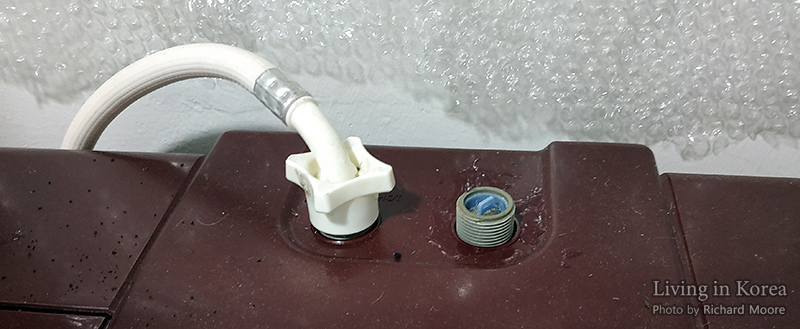
If you noticed this problem only after the water is firmly frozen, you’ll need to thaw the connection at the wall, disconnect and thaw the hoses, and probably thaw the hose connection at the washing machine. Two methods for thawing the frozen wall connection; holding an air dryer on the hot setting and waiting in the cold for water to flow, or boil a pot of water and place it under the frozen wall connection allowing the heat to rise. The second method might take more time, but you don’t need a hair dryer and don’t need to be waiting in the cold for ten minutes. Once you have removed the frozen hoses, which is easier said than done,they need to be warmed up enough for the ice to melt and be removed. A good method is take them to your bathroom and spray them with hot water with your shower hose.
Regardless of season, mold (곰팡이, gompangi) can be a problem. With some prevention and checking occasionally, you’ll be able to avoid mold from growing in your home and the hassle of cleaning it. In their most basic form, mold needs a moist warm area. In a nutshell, remove the moisture and you shouldn’t have problems.
Bathrooms are the perfect environment for mold to grow as they are both warm and moist. Many families do not want their bathroom door open for everyone to see and therefore keep the bathroom door closed at all times. As it is rare for people to visit others’ homes, there actually aren’t many chances for people to see inside a bathroom, door closed or not. If you are concerned about mold, consider leaving the bathroom door open long enough for the temperature to return to home temperature and dry out.
A good method to remove moisture from your sock drawer or other small enclosed areas is with moisture absorbing products. A popular brand is 물먹는 하마 (물먹는 河馬, mulmeongneun hama), but other brands exist as well. Known generically as 제습제 (除濕製, jeseupje) these products are frequently sold in a plastic tub shaped container and come sealed with a thin plastic layer that must be removed before they can suck the moisture out of the air. Be careful to only remove that thin, typically gray layer, and not the white layer under it. That underlying white layer helps to keep the moisture in the container. After some time has gone by, water will collect inside which you can hear when you shake the container. To dispose of the collected water, cut one or two holes in the white layer as two holes help to drain it faster, empty the water into a sink, throw away the white layer and recycle the plastic tub.
Condensation (결로현상, 結露現狀, gyeollo hyeonsang) resulting in mold is a real concern during the colder months. As the weather outside gets colder, you will make more efforts to keep it nice and warm with your floor heater (온돌, 溫突/溫契, ondol), electric blankets (전기이불, 電氣이불, jeongi ibul), or high power consuming electric heaters (전기난방기구, 電氣煖房器具/電氣暖房器具, jeongi nanbang gigu). This long-term temperature difference will result in condensation developing on the inside of your home. This is common on windows and sometimes in the corner of a room with an outside wall as the temperature difference will be highest there. The hotter the inside your home and the colder outside will home will increase the condensation.
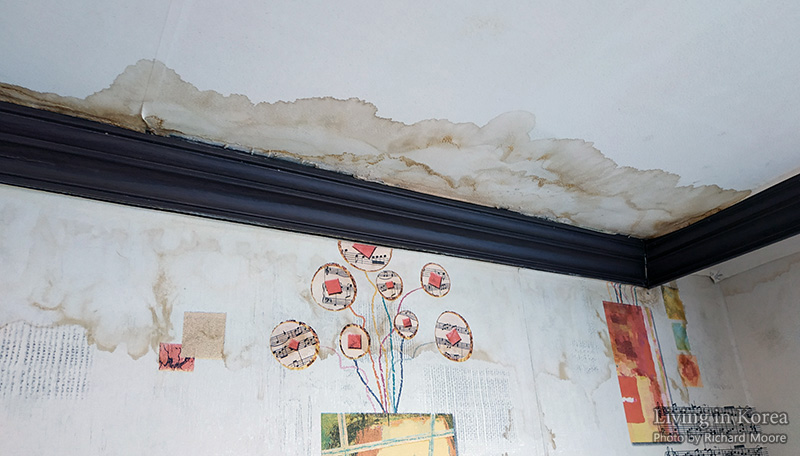
One of the best ways to rid your home of the condensation that forms mold, is to air out your home. The outside air in winter months is quite dry. Opening your windows for 10 or 15 minutes is usually enough to dry up condensation and remove molds before it occurs. You might want to consider doing this in the morning, right before you leave home so you don't make the home cold right after coming back from work.
If mold has already developed in your home, you'll need to dry the area and kill the mold. Mold killers (곰팡이제거제, 곰팡이除去製, gompangi jegeoje) are readily available in larger grocery stores and sometimes smaller ones. Spray, wipe, and dry. Walls are normally concrete with wallpaper covering, so you can scrub to a certain degree, being careful not to damage the wallpaper. But ceilings are not always solid, which means if you press them hard when trying to scrub the mold, you may pop a hole in your ceiling.
